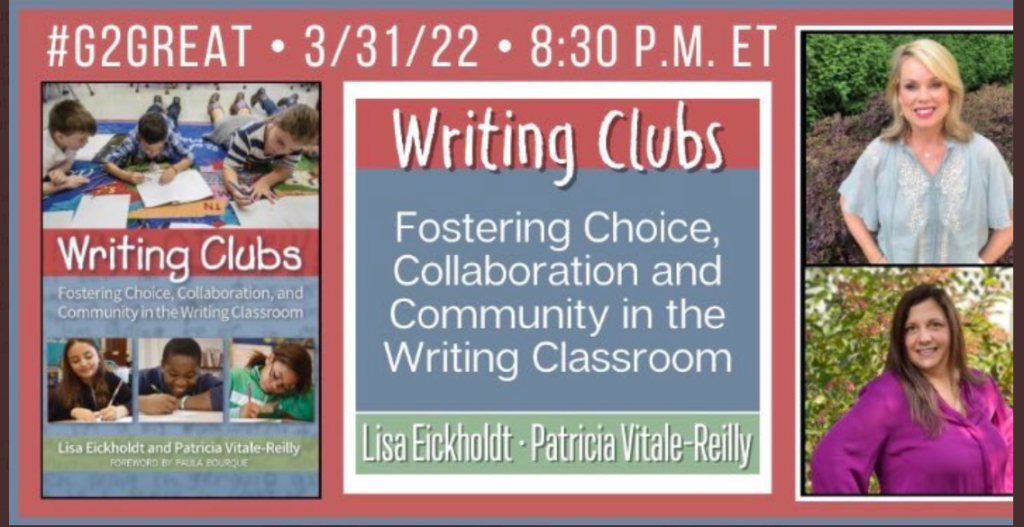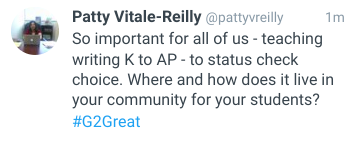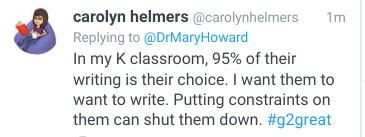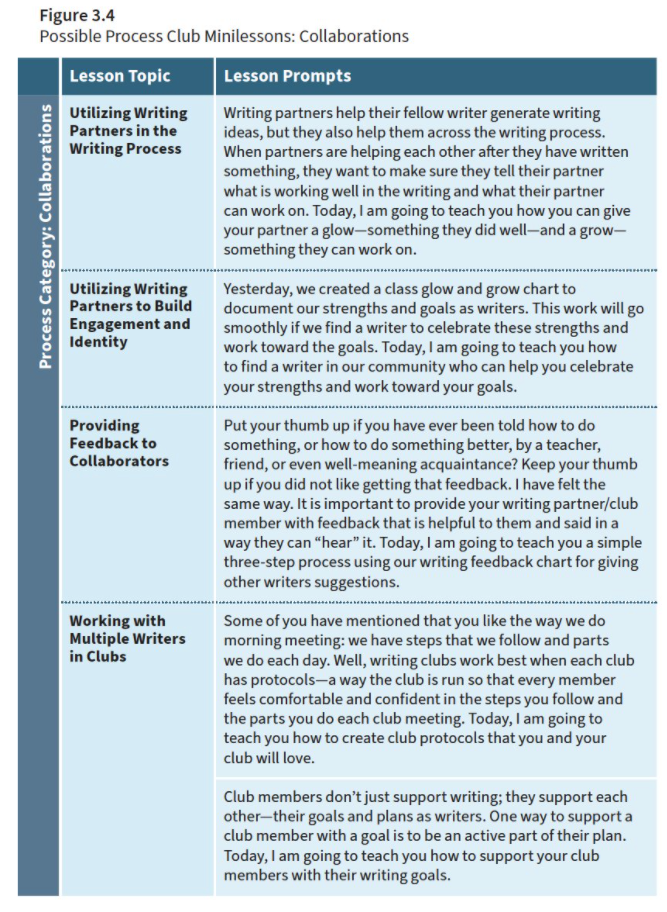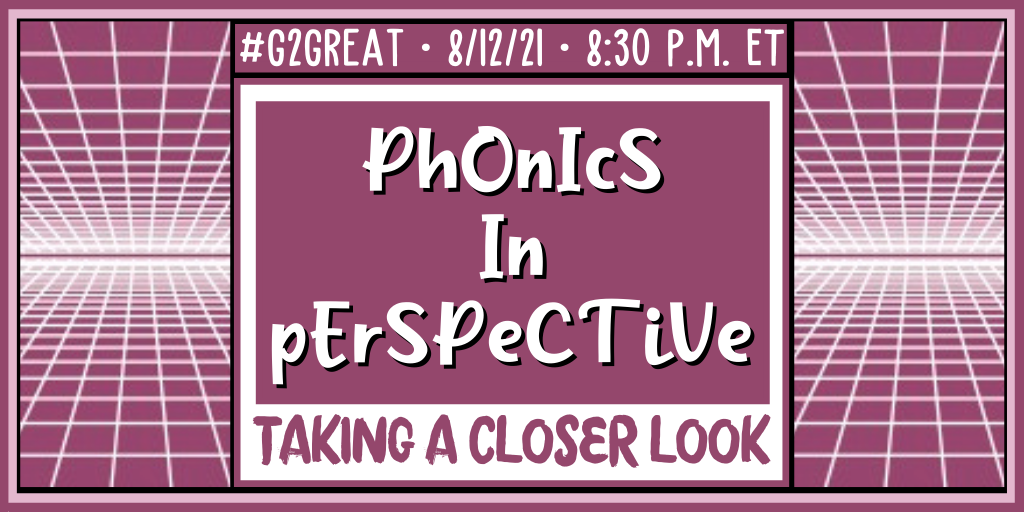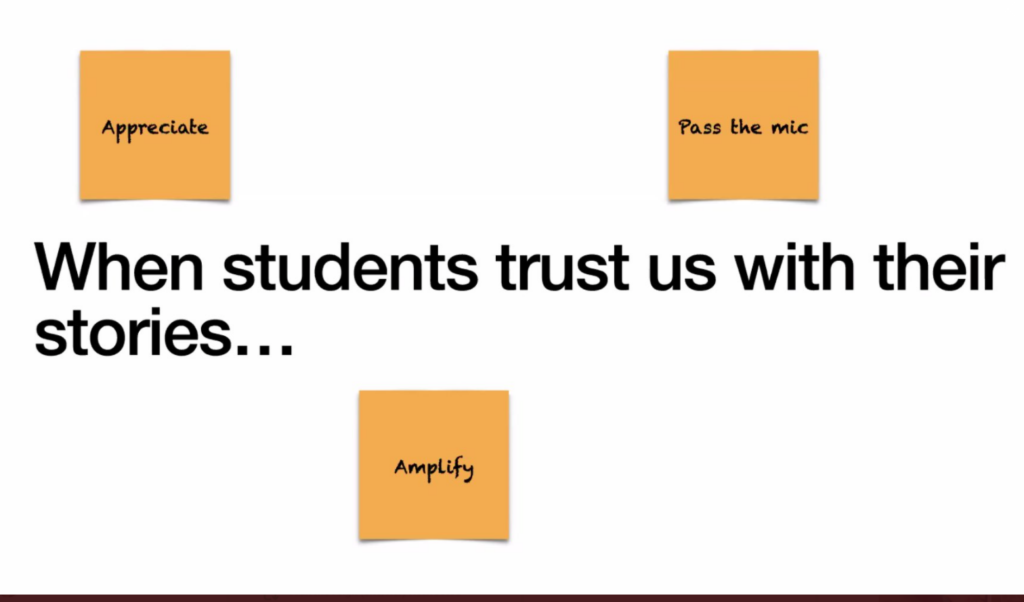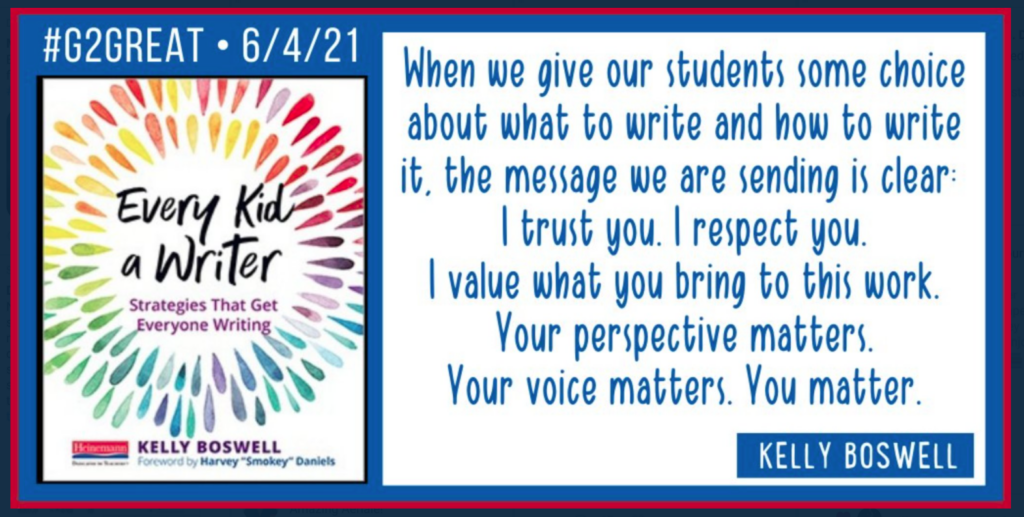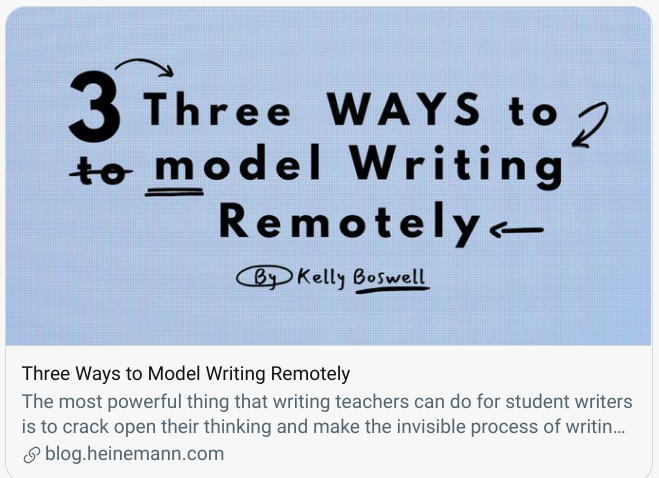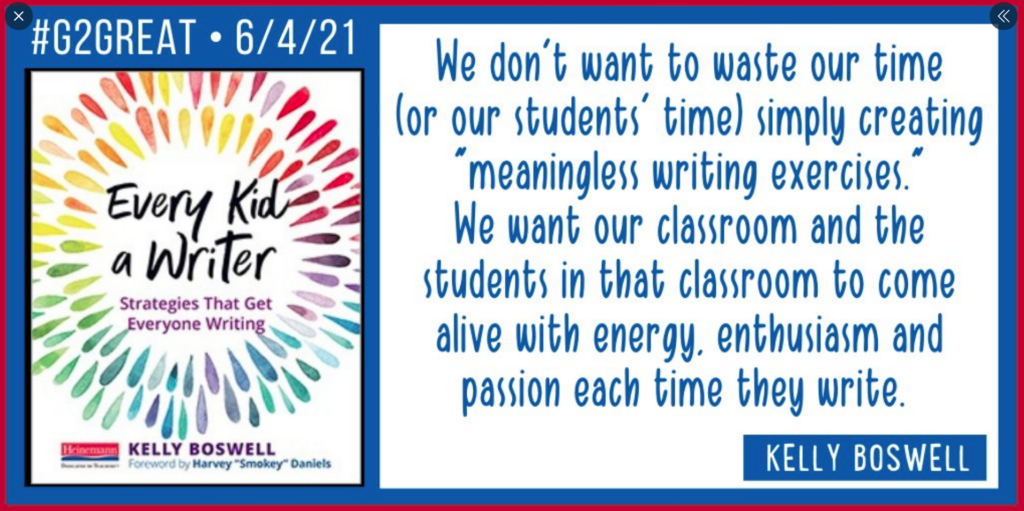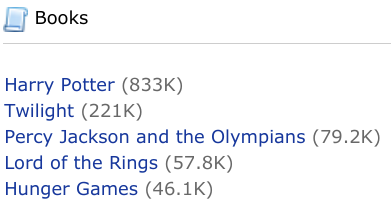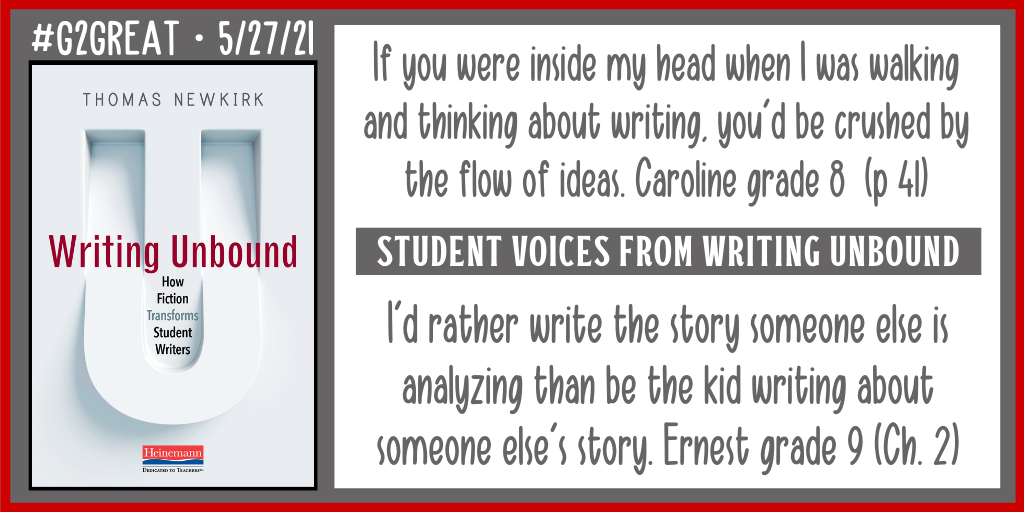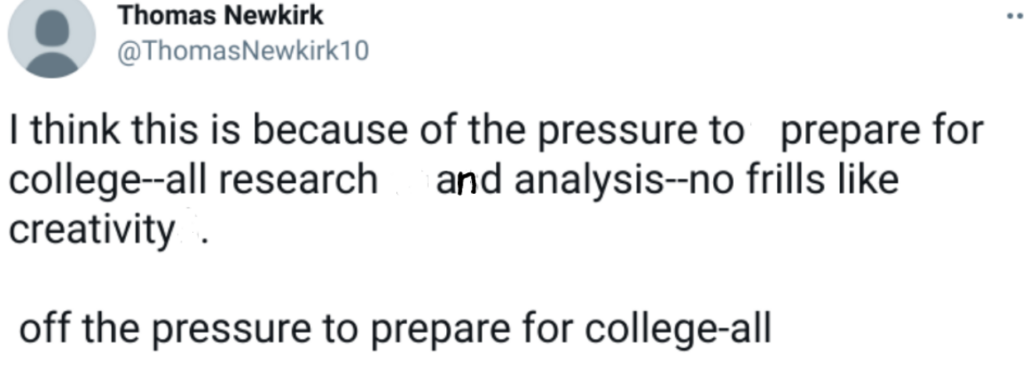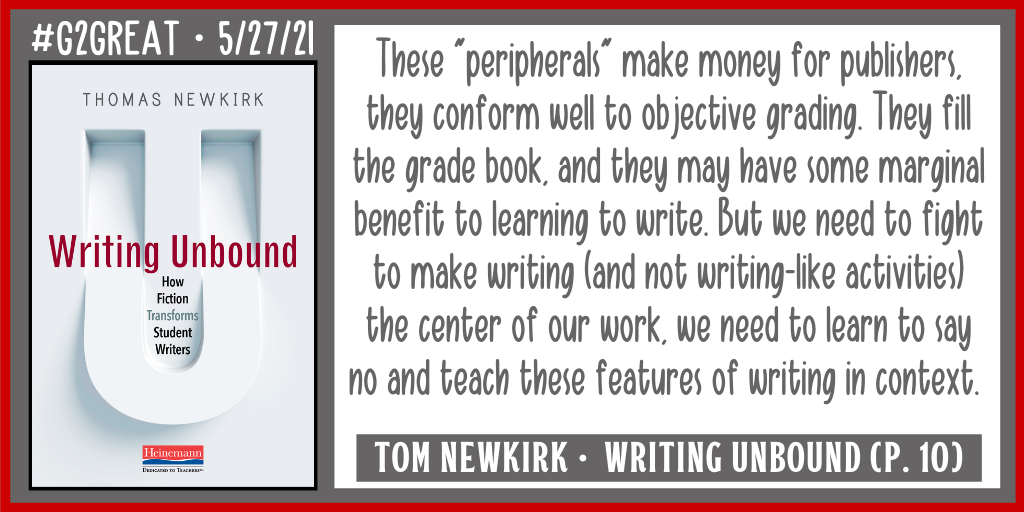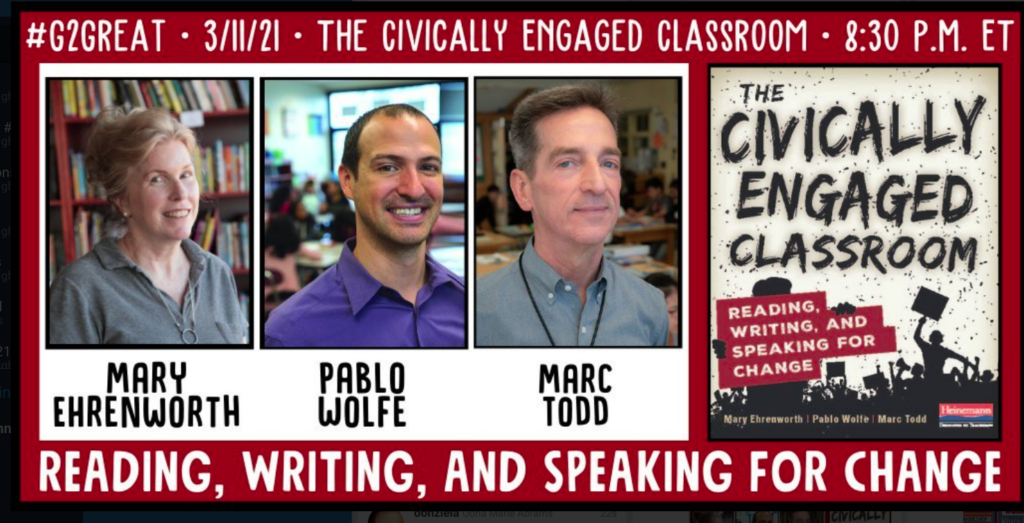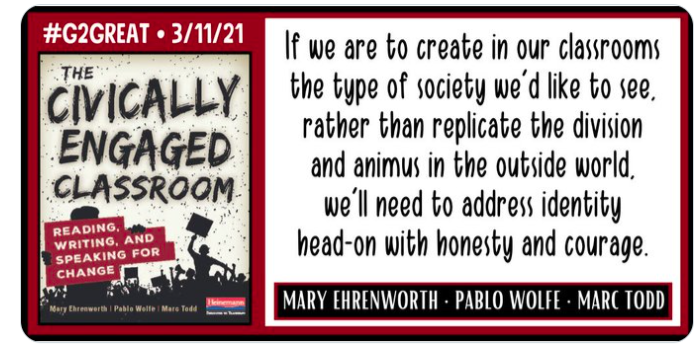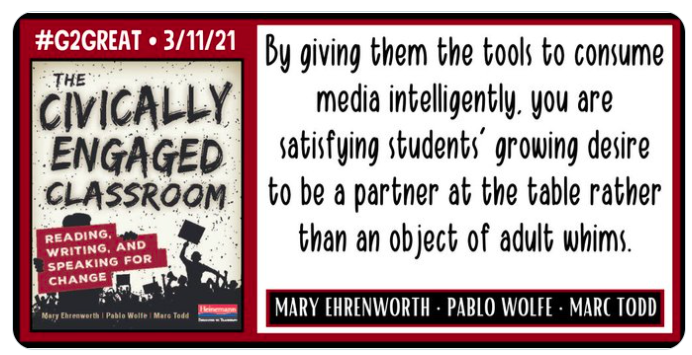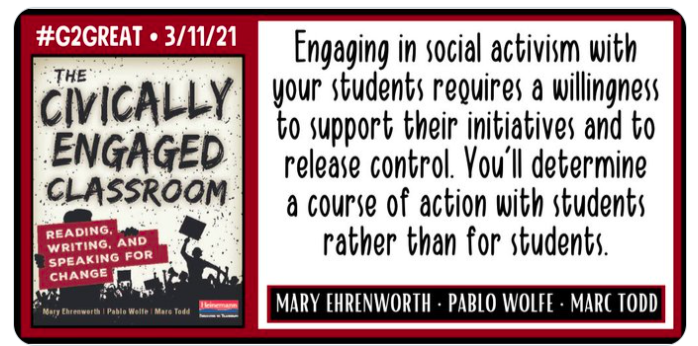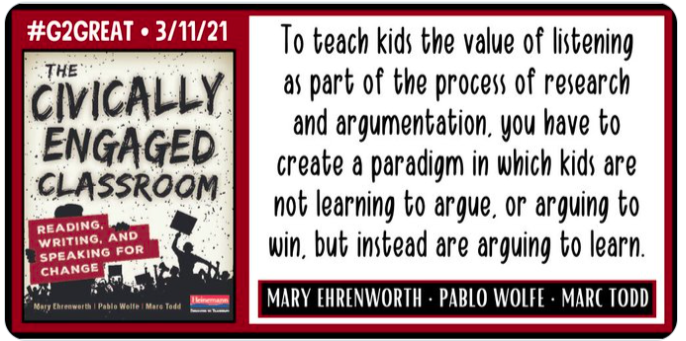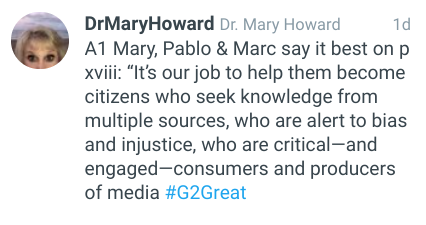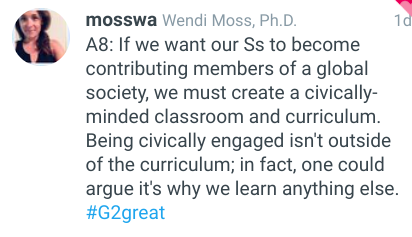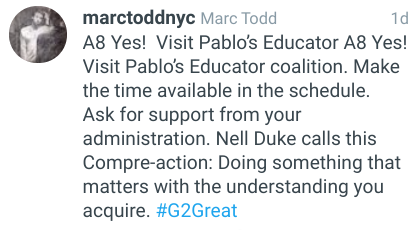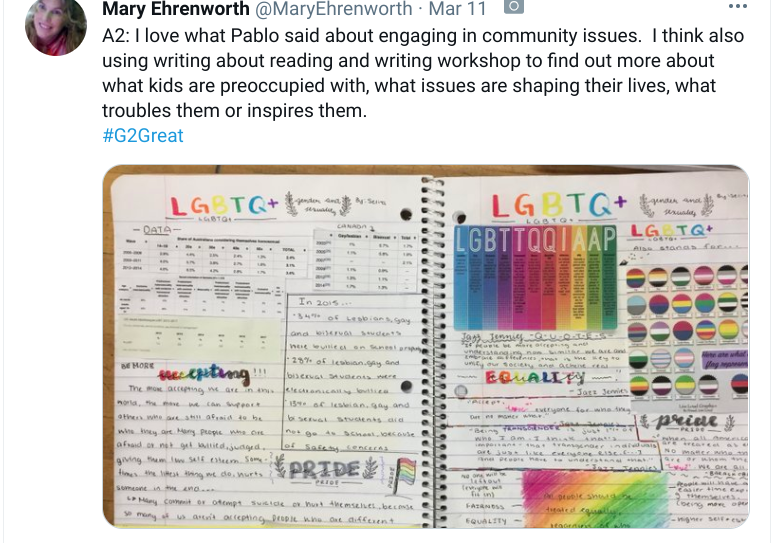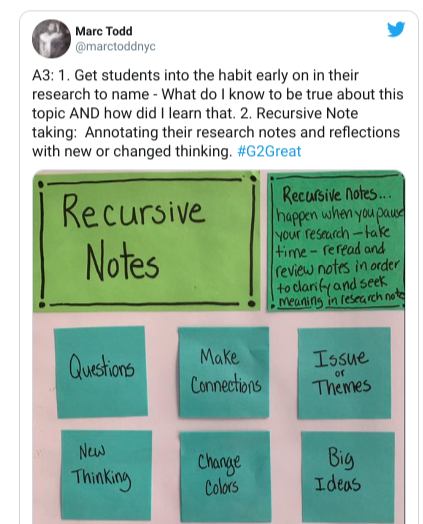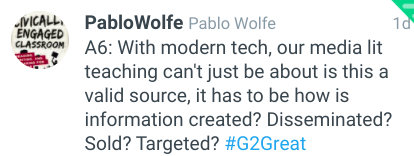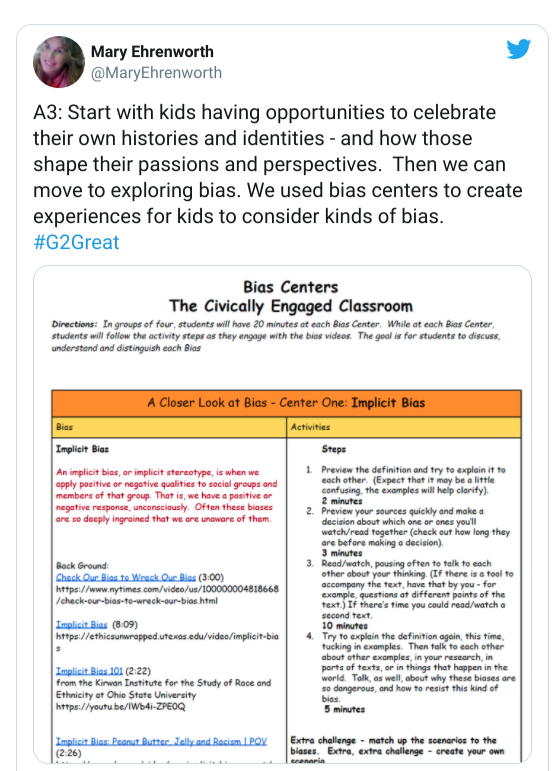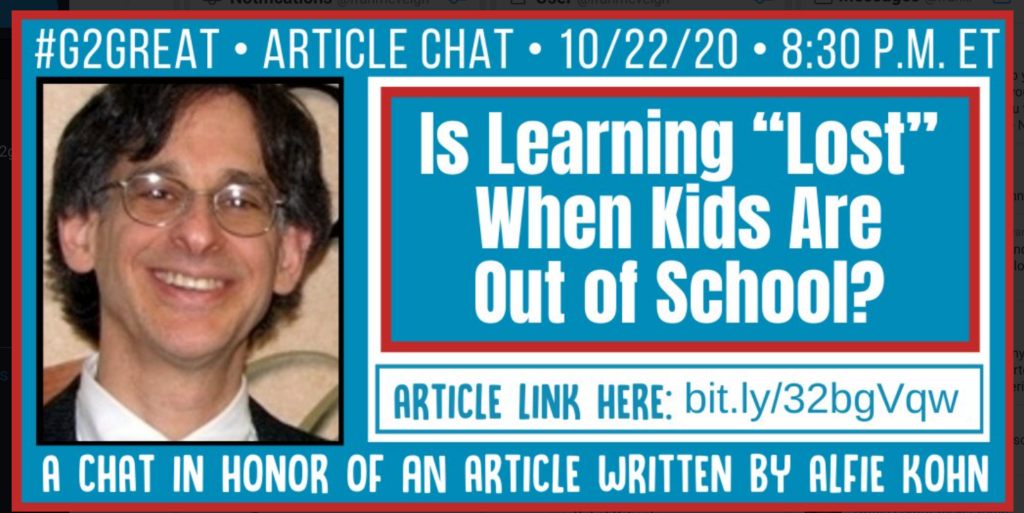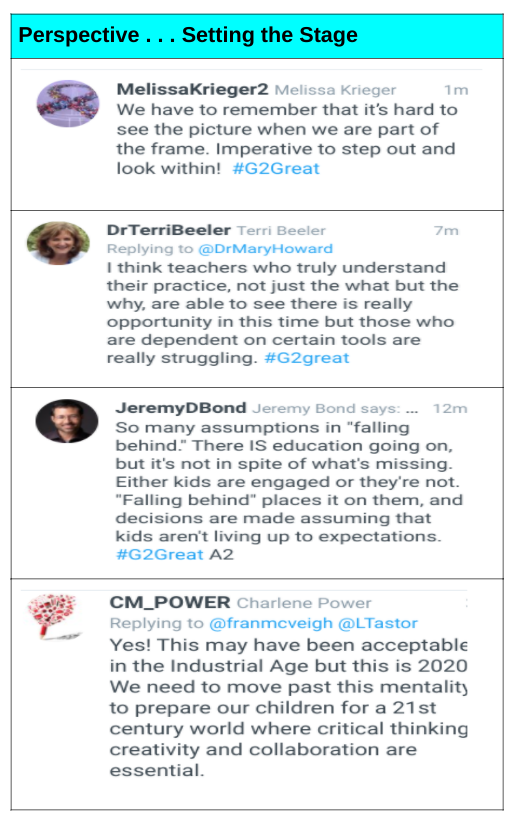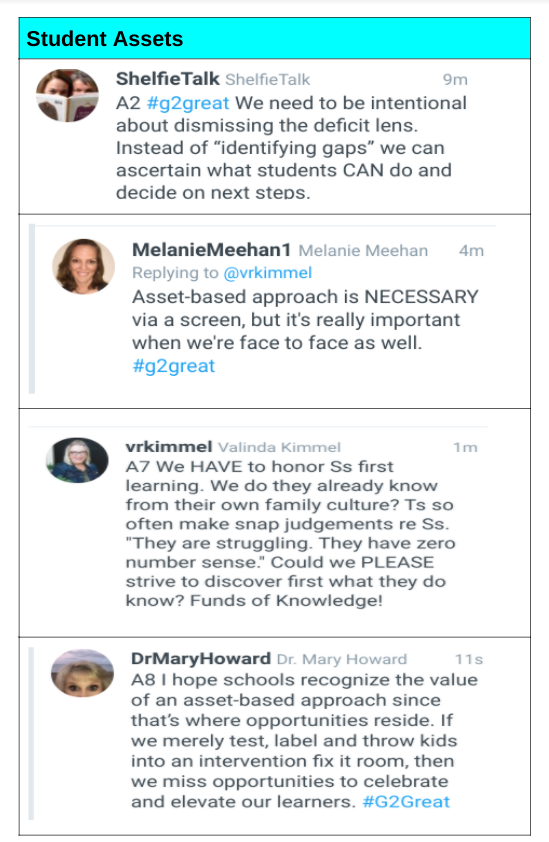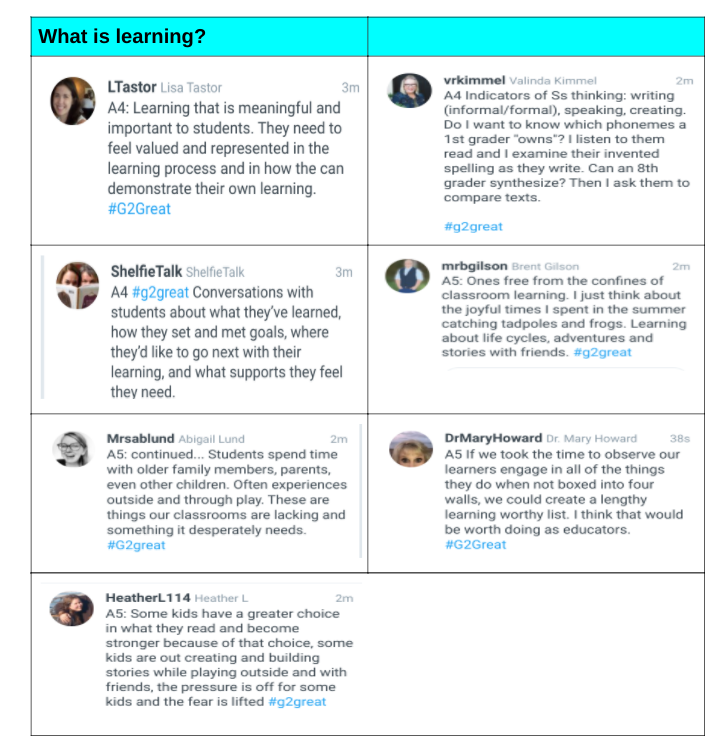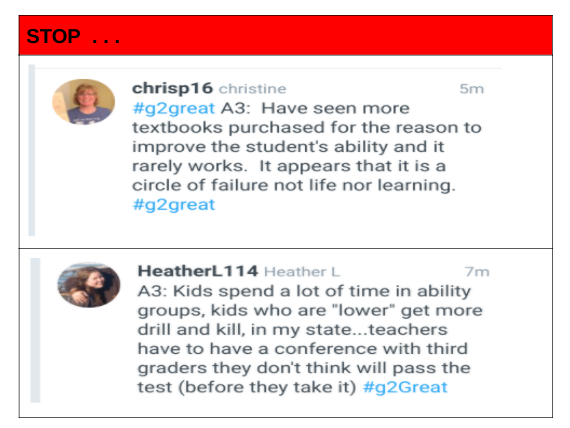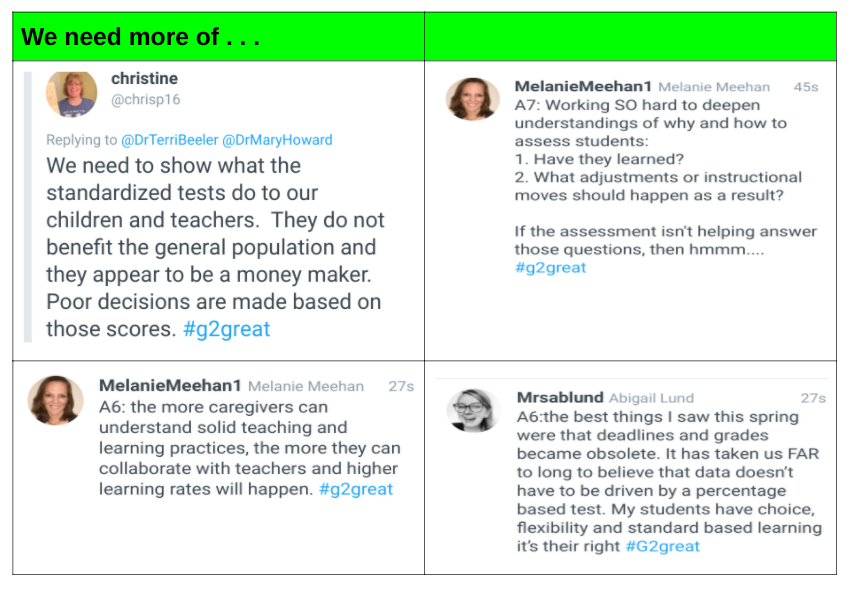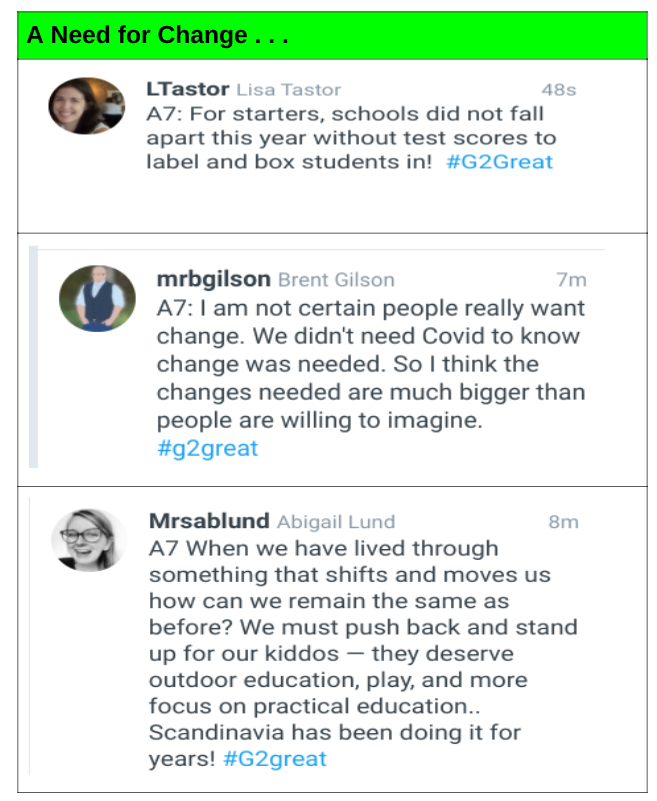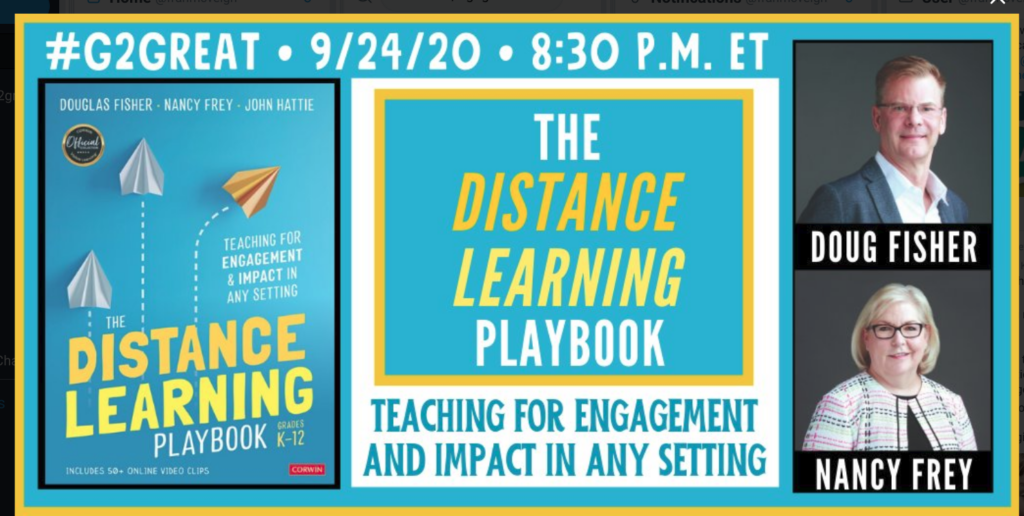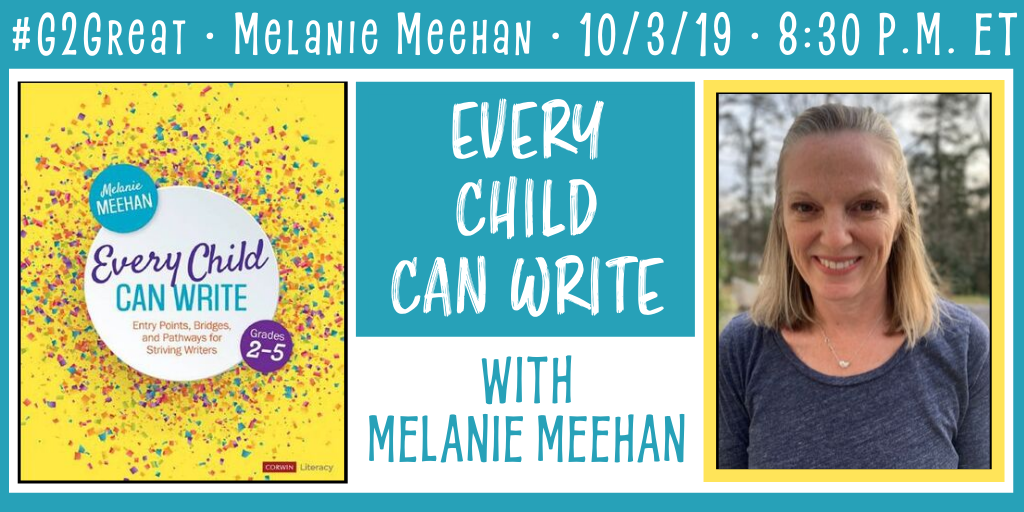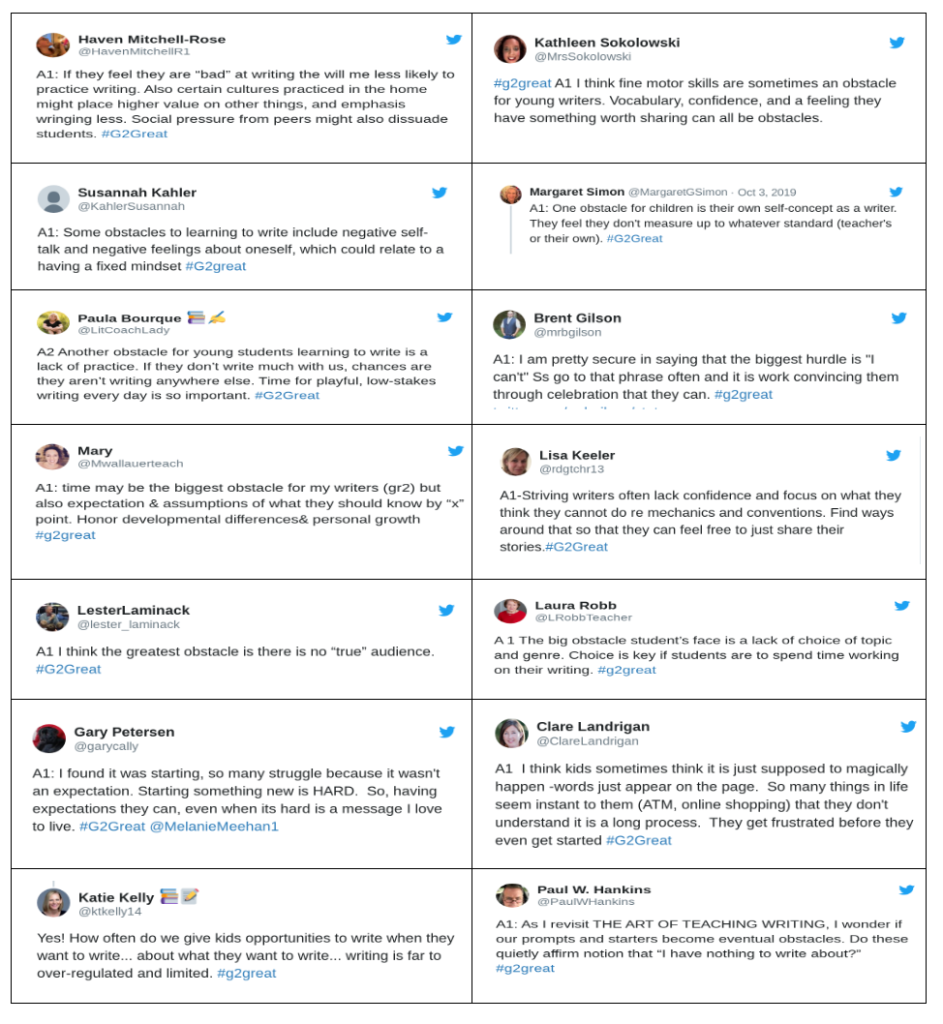By Fran McVeigh
On 10/3/2023, #G2Great welcomed Dr. Gravity Goldberg back to discuss the book that she co-authored with Barry Gilmore, Active Learning: 40 Teaching Methods to Engage Students in Every Class and Every Subject. The Wakelet artifact can be found here.
Before we dig into the content of this text, I want to reveal the WHY behind the text. This text. This text now. So this post begins with the author’s questions that inform us and our #G2Great friends.
1) What motivated you to write this book? What impact did you hope that it would have in the professional world?
This book was quite different from any others I wrote. I was asked to be a co-author by my colleague Barry Gilmore when he found out he had terminal cancer. One of his dying wishes was for the book to be completed. For me, the book started as a respectful tribute to his work. As I got more involved in the book and after Barry passed away the book also became a way for me to document and share the methods and moves that I used and witnessed having a real impact on students. I picked the manuscript back up after Covid lockdown and wanted to really help teachers create more active learning spaces.
Gravity Goldberg, Google doc.
2) What are your BIG takeaways from your book that you hope teachers will embrace in their teaching practices?
A big takeaway for me is that student thinking is the goal in every subject area. It can be easy to make the content the goal but really it is all about how students use the content, what they think, and how they learn to communicate about it. I was able to see how four main types of thinking run through all we learn– independent thinking, creative thinking, problem-solving thinking, and empathetic thinking. Once we focus on thinking, it allows us to really create more actively engaging lessons.
I think we can all get caught up in the siloing of subject areas and forget that learning and engagement are not all that different in a reading, social studies or music class. I hope that teachers begin to blur the lines a bit more when designing learning experiences for students across the day. It is powerful for a student to practice a type of thinking in period 2 and again in periods 4 and 6 in different contexts. We can really use more collaborative planning across departments when writing curricula and planning lessons.
Another takeaway from the book is that some tried and true methods of teaching still work in 2023, albeit with some tweaks. Some of the methods in this book are not new at all but our examples and tools allow us to show their current application. And some of the past methods we relied upon just don’t really lead to active engagement so we can let them go. By curating 40 methods (some tried and true and some new) we can make intentional choices about how we teach and how we set students up to think.
Gravity Goldberg, Google doc.
3) What is a message from the heart you would like for every teacher to keep in mind?
True active engagement comes from being genuinely interested and curious about your students. No method, program, or lesson plan can ever engage students as well as a teacher who shows up as themselves wanting to know their students.
Gravity Goldberg, Google doc.
So I will admit that the title intrigued me long before I saw the book. The author was a plus.
Active Learning, check.
40 Teaching Methods, check.
Engage Students, check.
Every Class, check.
Every Subject, check.
Right there, I was hooked and ready to read. Seven reasons that I wanted to know more. Seven. And that was just from the title!
After the chat, my five BIG takeaways include: Independent Thinking as the End Goal, what Active Engagement means, 4 Ways to Think Deeply, Designing Learning Experiences, and Across Every Subject Every Day.
What is the End Goal?
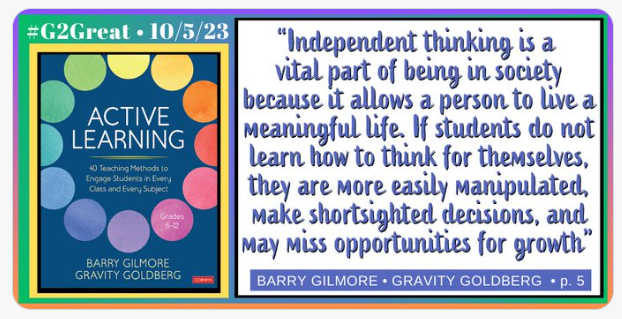
A belief in “independent thinking” means that each and every student has the potential to be a lifelong learner who lives a meaningful life. Isn’t this what all people want for both themselves and the rest of their community and their world?
What is Active Engagement?
How do we get to independent thinking? School needs to actively engage students as Gravity outlines in the following tweet. We focus on the bodies, brains and hearts of our students.
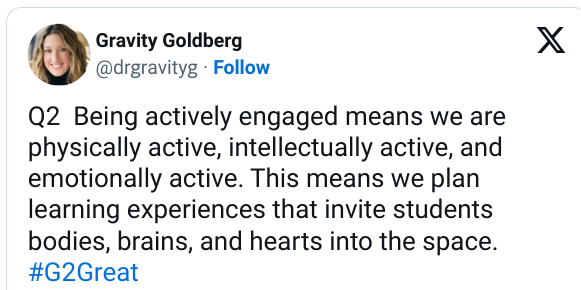
Thinking Deeply in 4 Different Ways
Gravity provided this chart that further describes the different types of thinking that students need to develop as well as the critical column about why each one is important. Why are these four needed? Because it’s about developing the learner’s potential . . . not just a rote response or regurgitation of facts. What do you find in this table?
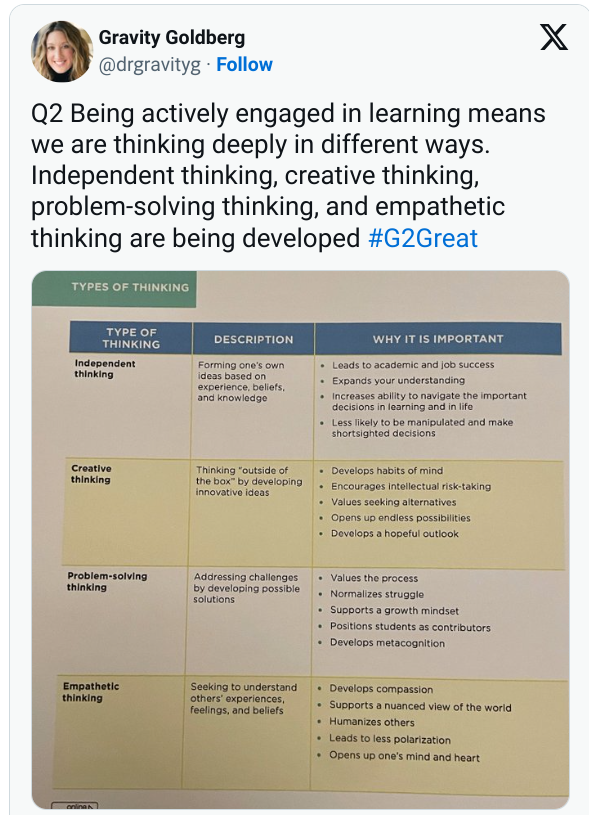
Design Experiences
The phrase “student-centered” has been used for decades now in a variety of ways. But what if we instead switched that up to be “learner-focused” when we design experiences for students that make the classroom work for them. School was easy for me, but it would have been a lot more fun, creative, and humanizing if we had been “learner-focused.” And the criteria in the second tweet provides a “How To” if you want to consider some of your own learning designs.
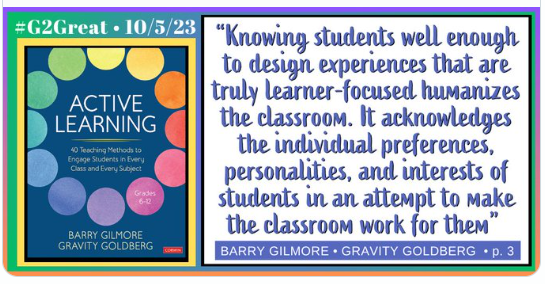

Across Subject Areas
And the final gold from both the book and the chat is so true and so simple. Each subject area is different. But the connection is truly the way that we think and engage with the content. It’s the same all day long IF and WHEN “learning-centered” designed experiences are the norm and expectation.

What do we want students to learn?
What do you value and why? Is it the structures and spaces we call school? Or is it the thinking that will help them be lifelong curious learners? The thinking that will allow them to remain engaged with living and be successful in whatever they attempt? Barry and Gravity give us choices that we can make as we work on centering thinking and learning. Some of these methods are tried and true and need to remain in our repertoire. Perhaps some of our methods need a bit of revision. And yet others may need to be tossed. Envision the possibilities for our students if we embrace active learning as our goal!

